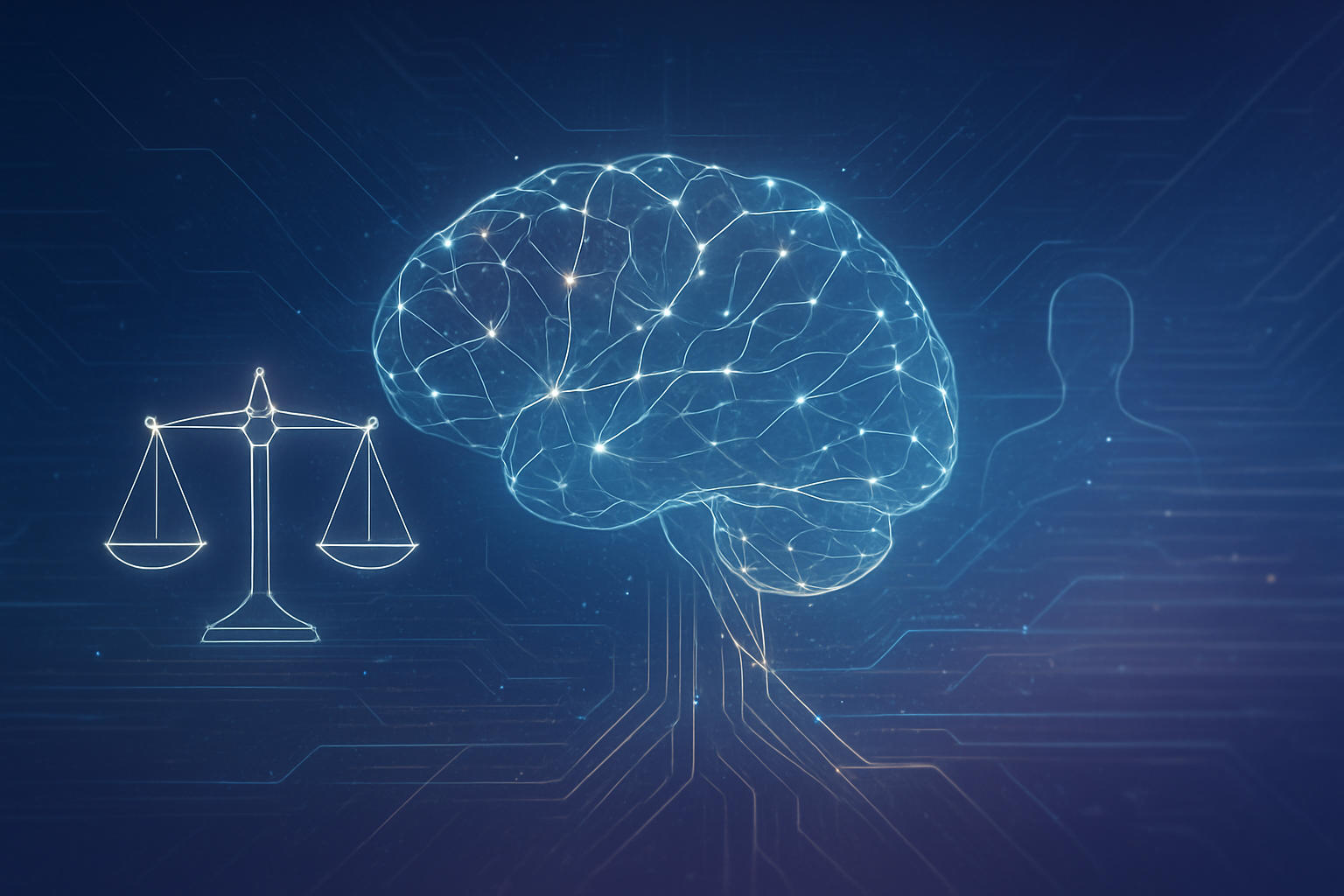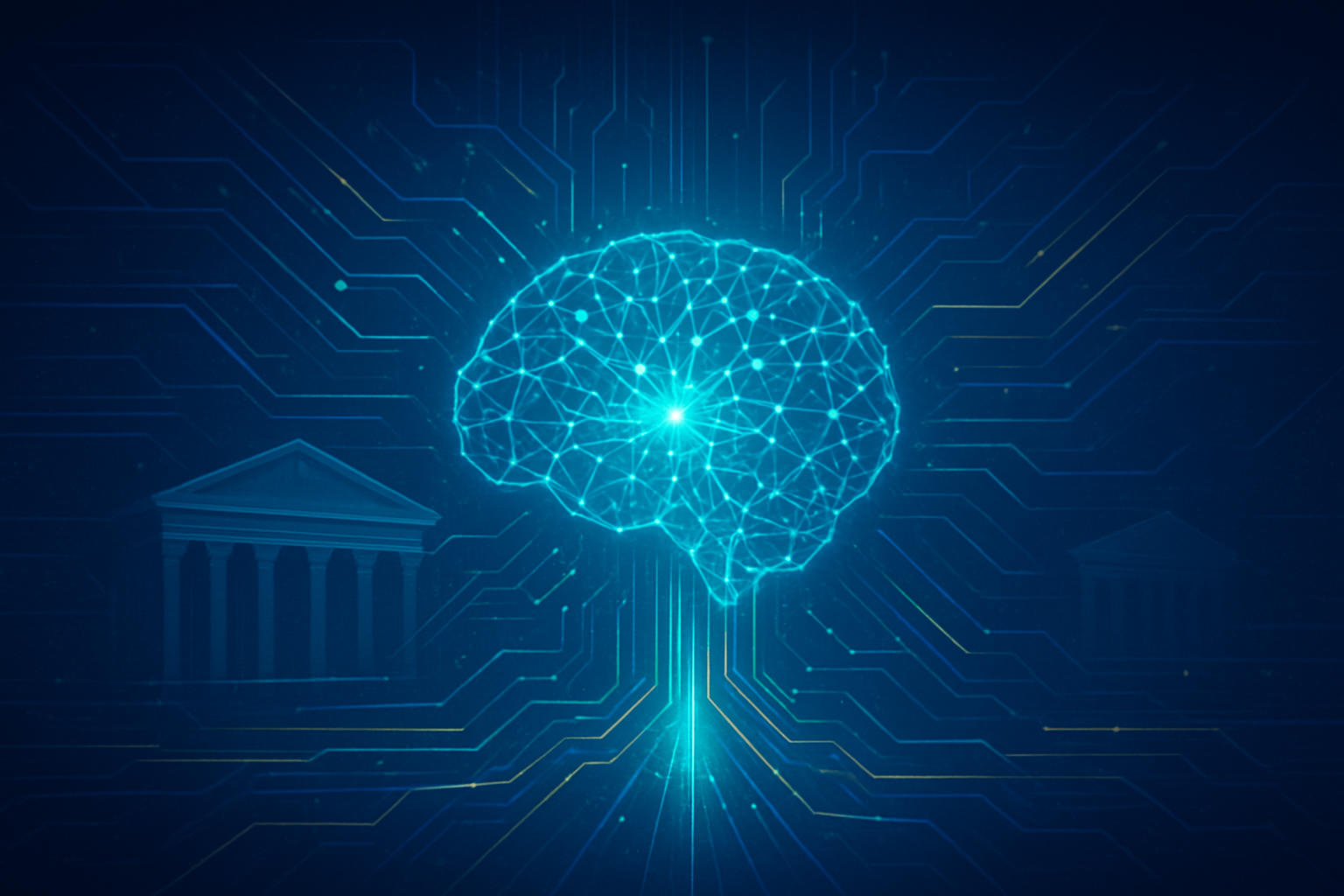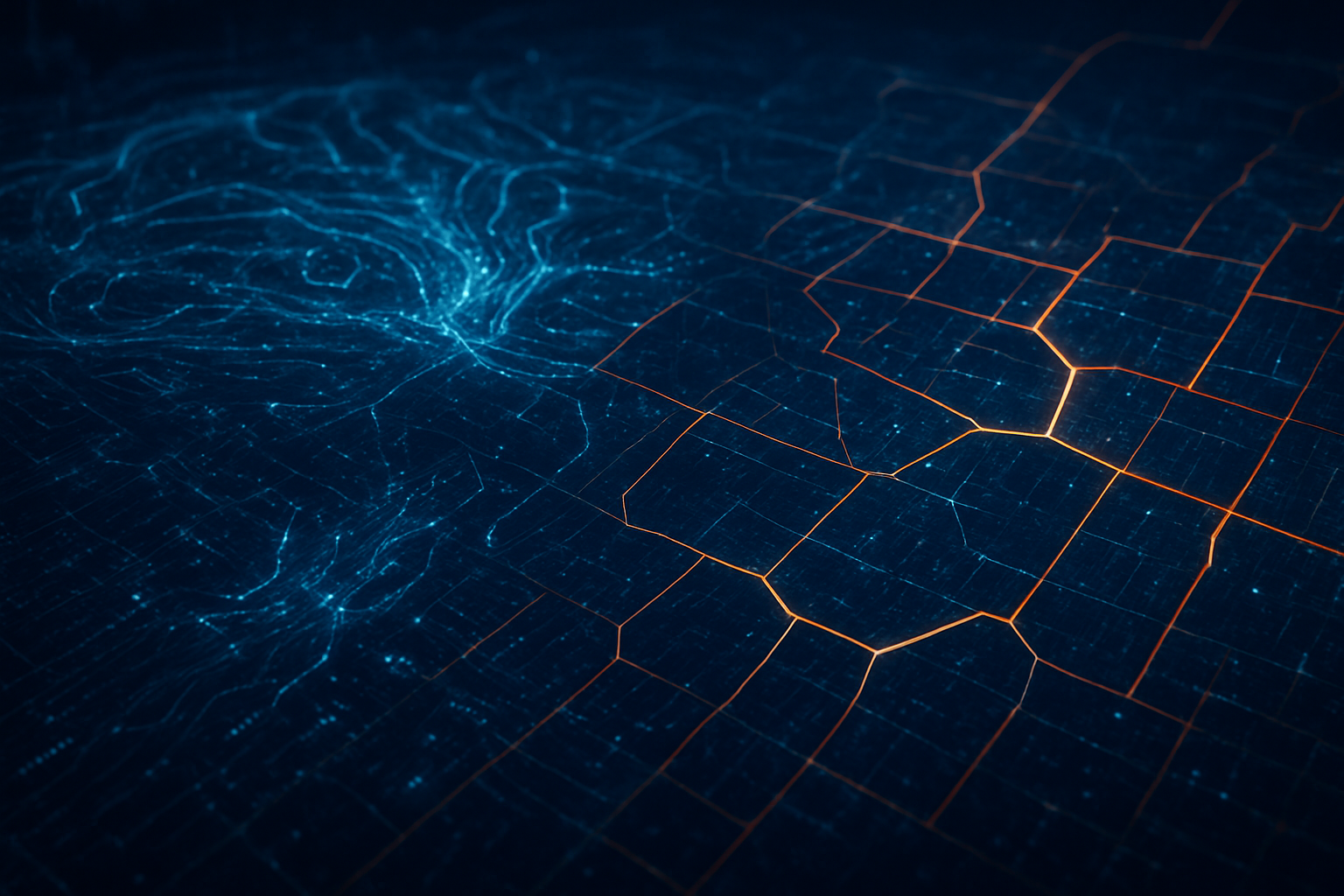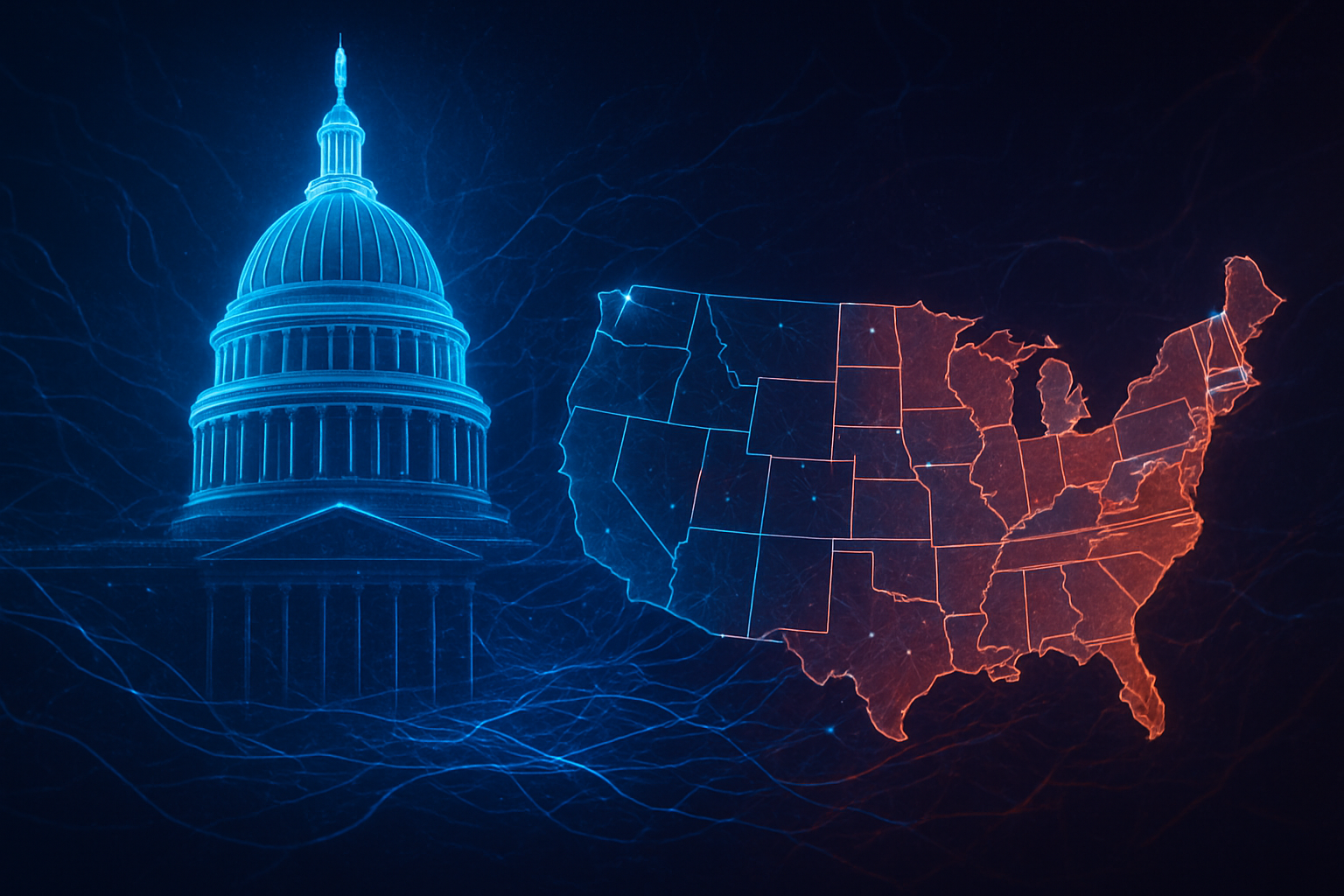SALT LAKE CITY, UT – Utah Governor Spencer Cox has positioned his state at the forefront of the burgeoning debate over artificial intelligence regulation, advocating for a proactive, state-centric approach that distinguishes sharply between governing AI's application and dictating its development. As federal lawmakers grapple with the complex challenge of AI oversight, Governor Cox's administration is moving swiftly to implement a regulatory framework designed to protect citizens from potential harms while simultaneously fostering innovation within the rapidly evolving tech landscape. This strategic push comes amidst growing concerns about federal preemption, with Cox asserting that states are better equipped to respond to the dynamic nature of AI.
Governor Cox's philosophy centers on the conviction that government should not stifle the ingenuity inherent in AI development but must firmly regulate its deployment and use, particularly when it impacts individuals and society. This nuanced stance, reiterated as recently as December 2, 2025, at an AI Summit hosted by the Utah Department of Commerce, underscores a commitment to what he terms "pro-human AI." The Governor's recent actions, including the signing of several landmark bills in early 2025 and the unveiling of a $10 million workforce accelerator initiative, demonstrate a clear intent to establish Utah as a leader in responsible AI governance.
Utah's Blueprint: A Detailed Look at Differentiated AI Governance
Utah's regulatory approach, championed by Governor Cox, is meticulously designed to create a "regulatory safe harbor" for AI innovation while establishing clear boundaries for its use. This strategy marks a significant departure from potential broad-stroke federal interventions that some fear could stifle technological progress. The cornerstone of Utah's framework is the Artificial Intelligence Policy Act (Senate Bill 149), signed into law on March 13, 2024, and effective May 1, 2024. This pioneering legislation mandated specific disclosure requirements for entities employing generative AI in interactions with consumers, especially within regulated professions. It also established the Office of Artificial Intelligence Policy within the state's Department of Commerce – a "first-in-the-nation" entity tasked with stakeholder consultation, regulatory proposal facilitation, and crafting "regulatory mitigation agreements" to balance innovation with public safety.
Further solidifying this framework, Governor Cox signed additional critical bills in late March and early April 2025. The Artificial Intelligence Consumer Protection Amendments (S.B. 226), effective May 2025, refines disclosure mandates, requiring AI usage disclosure when consumers directly inquire and proactive disclosures in regulated occupations, with civil penalties for high-risk violations. H.B. 418, the Utah Digital Choice Act, taking effect in July 2026, grants consumers expanded rights over personal data and mandates open protocol standards for social media interoperability. Of particular note is H.B. 452 (Artificial Intelligence Applications Relating to Mental Health), effective May 7, 2025, which establishes strict guidelines for AI in mental health, prohibiting generative AI unless explicit privacy and transparency standards are met, preventing AI from replacing licensed professionals, and restricting health information sharing. Additionally, S.B. 271 (Unauthorized AI Impersonation), signed in March 2025, expanded existing identity abuse laws to cover commercial deepfake usage.
This legislative suite collectively forms a robust, state-specific model. Unlike previous approaches that might have focused on broad prohibitions or unspecific ethical guidelines, Utah's strategy is granular, targeting specific use cases where AI's impact on human well-being and autonomy is most direct. Initial reactions from the AI research community and industry experts have been cautiously optimistic, with many praising the state's proactive stance and its attempt to create a flexible, adaptable regulatory environment rather than a rigid, innovation-stifling one. The emphasis on transparency, consumer protection, and accountability for AI use rather than its development is seen by many as a pragmatic path forward.
Impact on AI Companies, Tech Giants, and Startups
Utah's pioneering regulatory framework, spearheaded by Governor Spencer Cox, carries significant implications for AI companies, tech giants, and startups alike. Companies operating or planning to expand into Utah, such as major cloud providers like Amazon (NASDAQ: AMZN) Web Services, Microsoft (NASDAQ: MSFT) Azure, and Google (NASDAQ: GOOGL) Cloud, as well as AI development firms and startups leveraging generative AI, will need to meticulously adhere to the state's disclosure requirements and consumer protection amendments. This framework particularly benefits companies that prioritize ethical AI development and deployment, as it provides a clearer legal landscape and a potential competitive advantage for those that can demonstrate compliance and responsible AI use.
The competitive landscape for major AI labs and tech companies could see a subtle but important shift. While the legislation doesn't directly regulate the core AI models developed by entities like OpenAI or Anthropic, it heavily influences how their products are deployed and utilized within Utah. Companies that can quickly adapt their services to include transparent AI disclosures and robust consumer consent mechanisms will be better positioned. This could disrupt existing products or services that rely on opaque AI interactions, pushing them towards greater transparency. Startups, often more agile, might find opportunities to build compliance-first AI solutions or platforms that help larger companies navigate these new regulations, potentially creating a new market for AI governance tools and services.
Furthermore, the creation of the Office of Artificial Intelligence Policy and the AI Learning Laboratory Program offers a unique advantage for companies willing to engage with state regulators. The Learning Lab, which provides a "regulatory safe harbor" through temporary exemptions for testing AI solutions, could attract innovative AI startups and established firms looking to experiment with new applications under a supervised, yet flexible, environment. This strategic advantage could position Utah as an attractive hub for responsible AI innovation, drawing investment and talent, especially for companies focused on applications in regulated sectors like healthcare (due to H.B. 452) and consumer services.
Broader Significance and the AI Landscape
Governor Cox's push for state-level AI regulations in Utah is not merely a local initiative; it represents a significant development within the broader national and international AI landscape. His rationale, rooted in preventing the societal harms witnessed with social media and his concerns about federal preemption, highlights a growing sentiment among state leaders: that waiting for a slow-moving federal response to rapidly evolving AI risks is untenable. This proactive stance could inspire other states to develop their own tailored regulatory frameworks, potentially leading to a patchwork of state laws that AI companies must navigate, or conversely, spur federal action to create a more unified approach.
The impact of Utah's legislation extends beyond compliance. By focusing on the use of AI—mandating transparency in generative AI interactions, protecting mental health patients from unregulated AI, and curbing unauthorized impersonation—Utah is setting a precedent for "pro-human AI." This approach aims to ensure AI remains accountable, understandable, and adaptable to human needs, rather than allowing unchecked technological advancement to dictate societal norms. The comparison to previous AI milestones, such as the initial excitement around large language models, suggests a maturing perspective where the ethical and societal implications are being addressed concurrently with technological breakthroughs, rather than as an afterthought.
Potential concerns, however, include the risk of regulatory fragmentation. If every state develops its own distinct AI laws, it could create a complex and burdensome compliance environment for companies operating nationwide, potentially hindering innovation due to increased legal overhead. Yet, proponents argue that this decentralized approach allows for experimentation and iteration, enabling states to learn from each other's successes and failures in real-time. This dynamic contrasts with a single, potentially rigid federal law that might struggle to keep pace with AI's rapid evolution. Utah's model, with its emphasis on a "regulatory safe harbor" and an AI Learning Laboratory, seeks to mitigate these concerns by fostering a collaborative environment between regulators and innovators.
Future Developments and Expert Predictions
The future of AI regulation, particularly in light of Utah's proactive stance, is poised for significant evolution. Governor Cox has already signaled that the upcoming 2026 legislative session will see further efforts to bolster AI regulations. These anticipated bills are expected to focus on critical areas such as harm reduction in AI companions, enhanced transparency around deepfakes, studies on data ownership and control, and a deeper examination of AI's interaction with healthcare. These developments suggest a continuous, iterative approach to regulation, adapting to new AI capabilities and emergent societal challenges.
On the horizon, we can expect to see increased scrutiny on the ethical implications of AI, particularly in sensitive domains. Potential applications and use cases that leverage AI will likely face more rigorous oversight regarding transparency, bias, and accountability. For instance, the deployment of AI in areas like predictive policing, credit scoring, or employment decisions will likely draw inspiration from Utah's focus on regulating AI's use to prevent discriminatory or harmful outcomes. Challenges that need to be addressed include establishing universally accepted definitions for AI-related terms, developing effective enforcement mechanisms, and ensuring that regulatory bodies possess the technical expertise to keep pace with rapid advancements.
Experts predict a continued push-and-pull between state and federal regulatory efforts. While a comprehensive federal framework for AI remains a long-term goal, states like Utah are likely to continue filling the immediate void, experimenting with different models. This "laboratories of democracy" approach could eventually inform and shape federal legislation. What happens next will largely depend on the effectiveness of these early state initiatives, the political will at the federal level, and the ongoing dialogue between government, industry, and civil society. The coming months will be critical in observing how Utah's framework is implemented, its impact on local AI innovation, and its influence on the broader national conversation.
Comprehensive Wrap-Up: Utah's Defining Moment in AI History
Governor Spencer Cox's aggressive pursuit of state-level AI regulations marks a defining moment in the history of artificial intelligence governance. By drawing a clear distinction between regulating AI development and its use, Utah has carved out a pragmatic and forward-thinking path that seeks to protect citizens without stifling the innovation crucial for technological progress. Key takeaways include the rapid enactment of comprehensive legislation like the Artificial Intelligence Policy Act and the establishment of the Office of Artificial Intelligence Policy, signaling a robust commitment to proactive oversight.
This development is significant because it challenges the traditional top-down approach to regulation, asserting the agility and responsiveness of state governments in addressing fast-evolving technologies. It serves as a powerful testament to the lessons learned from the unbridled growth of social media, aiming to prevent similar societal repercussions with AI. The emphasis on transparency, consumer protection, and accountability for AI's deployment positions Utah as a potential blueprint for other states and even federal lawmakers contemplating their own AI frameworks.
Looking ahead, the long-term impact of Utah's initiatives could be profound. It may catalyze a wave of state-led AI regulations, fostering a competitive environment among states to attract responsible AI innovation. Alternatively, it could compel the federal government to accelerate its efforts, potentially integrating successful state-level strategies into a unified national policy. What to watch for in the coming weeks and months includes the practical implementation of Utah's new laws, the success of its AI Learning Laboratory Program in fostering innovation, and how other states and federal agencies react to this bold, state-driven approach to AI governance. Utah is not just regulating AI; it's actively shaping the future of how humanity interacts with this transformative technology.
This content is intended for informational purposes only and represents analysis of current AI developments.
TokenRing AI delivers enterprise-grade solutions for multi-agent AI workflow orchestration, AI-powered development tools, and seamless remote collaboration platforms.
For more information, visit https://www.tokenring.ai/.









